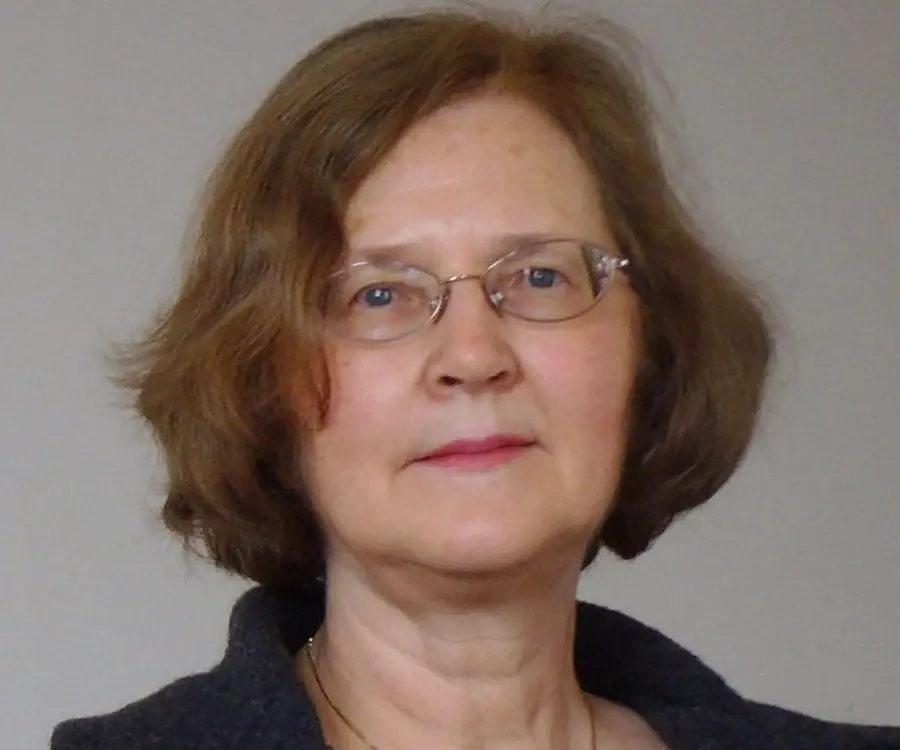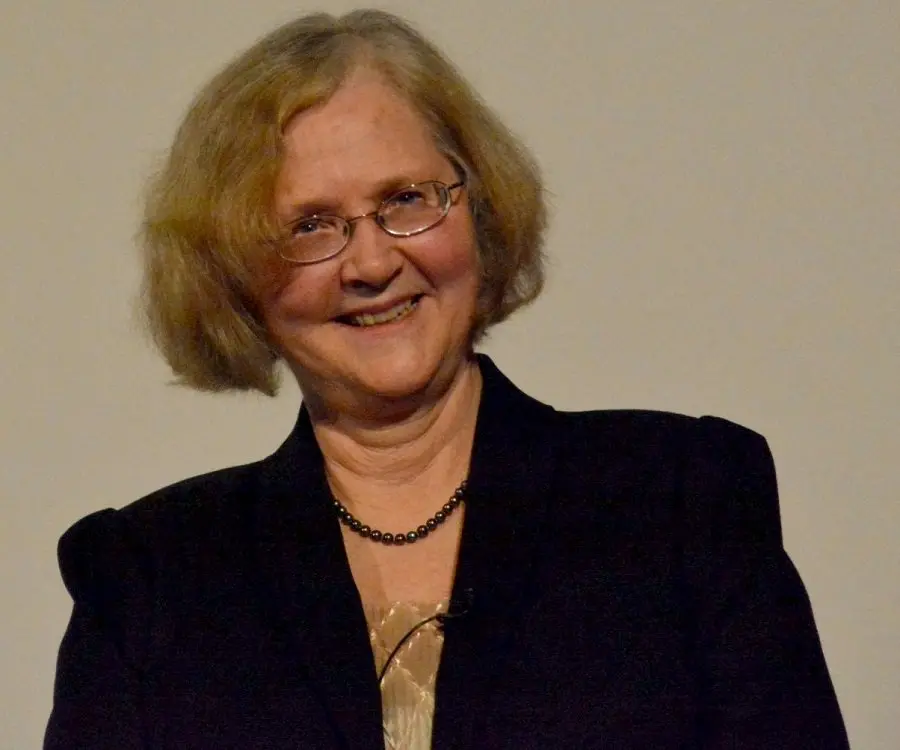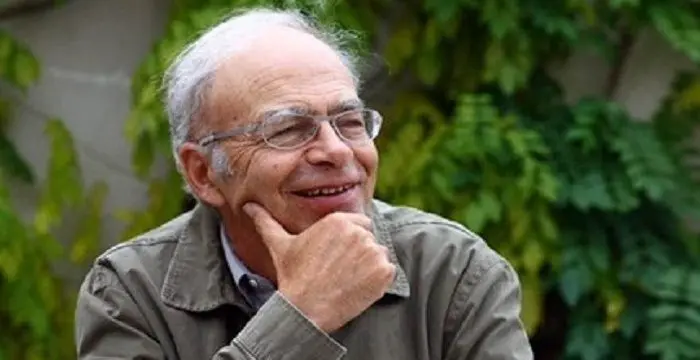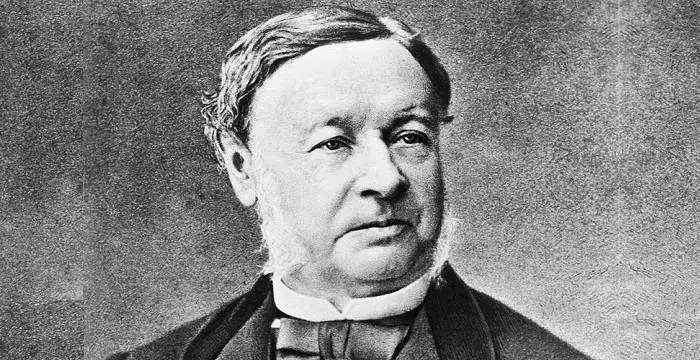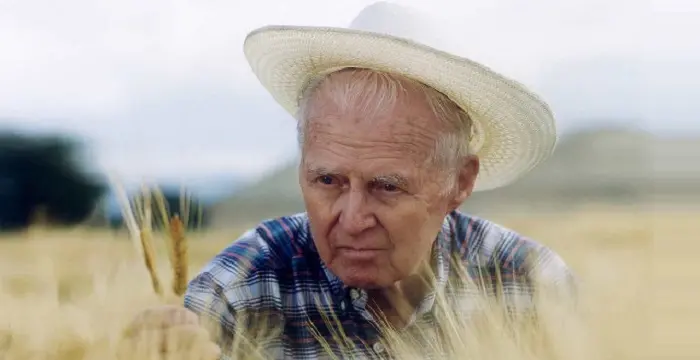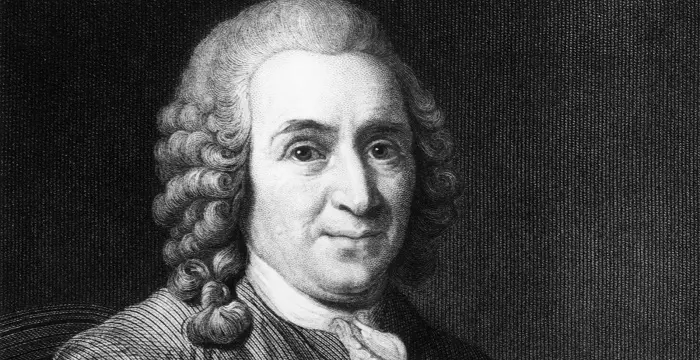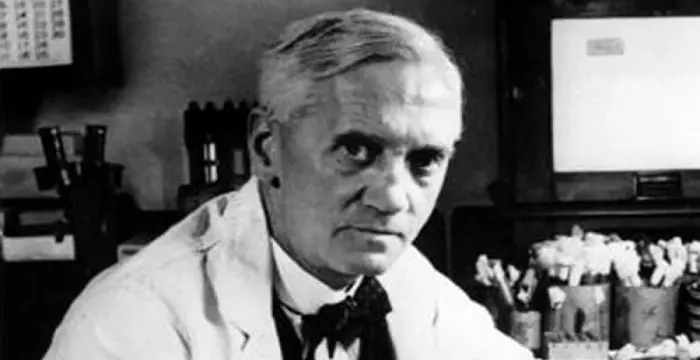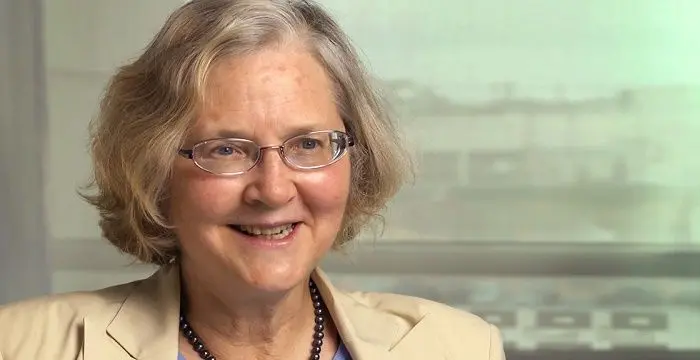
Elizabeth Blackburn - American-australian Researcher, Facts and Facts
Elizabeth Blackburn's Personal Details
Elizabeth Blackburn is a Nobel Prize winner who created a sensation with her finding on telomere and telomerase
| Information | Detail |
|---|---|
| Birthday | November 26, 1948 |
| Nationality | Australian, American |
| Famous | University Of Melbourne, Scientists, Biologists, American-australian Researcher |
| Spouses | John W. Sedat |
| Known as | Elizabeth Helen Blackburn |
| Childrens | Benjamin |
| Universities |
|
| Notable Alumnis |
|
| Birth Place | Hobart, Tasmania, Australia |
| Born Country | Australia |
| Gender | Female |
| Sun Sign | Sagittarius |
| Born in | Hobart, Tasmania, Australia |
| Famous as | American-Australian researcher |
Elizabeth Blackburn's photo
Who is Elizabeth Blackburn?
Elizabeth Helen Blackburn is an Australian-American researcher who was awarded the Nobel Prize in Physiology for her path-breaking work that led to the discovery of "telomerase", the enzyme that replenishes the telomere—a structure at the end of chromosomes that protects the chromosome. She shared the Nobel Prize with her fellow co-researchers Carol W. Greider and Jack W. Szostak. . Throughout her career, she has been honoured with numerous prestigious awards and honors including America’s top honor Albert Lasker Award in Basic Medical Research and Nobel Prize in Physiology or Medicine. She was also elected as a Fellow of the Royal Society of London, American Academy of Arts and Sciences and American Academy of Microbiology. For two years, she worked in medical ethics, serving as a member of the President’s Council on Bioethics but was controversially dismissed due to conflict with Bush administration. In recent years, she has been involved in a study that investigates the effect of stress on telomerase and telomeres with particular emphasis on mindfulness meditation.
// Famous University Of Melbourne
Nicole Kidman
Nicole Kidman is one of the most talented actors that the Hollywood film industry can boast of. Browse through this biography to get detailed information regarding her life, childhood, profile & timeline
Peter Singer
Peter Singer is an Australian moral philosopher who has challenged traditional notions of applied ethics throughout his philosophical and literary career. Check out this biography to get detailed information on his life.
Julia Gillard
Julia Gillard is a former Prime Minister of Australia and the first woman to hold the position. To know more about her childhood, career, profile and timeline read on
Childhood & Early Life
Elizabeth Helen Blackburn was born on November 26, 1948 in Hobart, Tasmania. She was the second of the seven children born to the couple. Both her parents were employed as physicians
When she was barely four years old, the family shifted to Launceston. It was there that she attended the Broadland House Church of England Girls’ Grammar School.
When she was sixteen, her family relocated to Melbourne where she enrolled at the University High School. It was during her time at the university high school that her interest in science was fuelled.
Matriculating with high marks, she enrolled at the University of Melbourne from where she earned a Bachelor degree in Science in 1970 and Master degree in Science in 1972.
Later moving over to England, she gained admission at the Darwin College at the University of Cambridge. In 1975, she gained her PhD degree.
Upon completing her doctoral studies, for two years, from 1975 to 1977 she d5d her postdoctoral work in molecular and cellular biology at the Yale University. It was during these years that she along with Joseph Gall undertook research of the single-celled organism, Tetrahymena and subsequently found out the presence of Telomeres.
Career
In 1978, she joined the faculty of the University of California, Berkeley in the Department of Microbiology. Therein, she continued with her research on telomeres.
While at the University of California, she through her research came to know about the existence of a unique enzyme that controlled the duplication of telomere, continuously rebuilding the ends of chromosomes to protect them in the cells of young organisms, and allowing them to decay in older ones. However, the theory could not be proved and thus was rebuffed by scientists.
Meanwhile, Carol Greider, a science enthusiast, had completed her graduation with a major in biology. It was during an interview with Blackburn that she became interested in telomeres so much so that she decided to conduct her graduate research on telomeres, in Blackburn’s laboratory.
Together the two worked on finding out more about telomere’s regulating enzyme. They tried one method after the other, trying to observe the proteins found in telomeres, with an aim to discover if any of those performed the enzymatic activity that they were keen on discovering.
After failed attempts and unsuccessful trysts, they de-routed from their method and tried using oligonucleotides of DNA produced in a chemical synthesizer, rather than bacteria. To their surprise, the endless wait seemed to have paid off as an unfamiliar protein was finally detected in telomere. What’s more, it performed an enzymatic action as assumed and predicted.
Extremely excited and thrilled by the discovery, they continued experimenting just to be certain that there was no alternative explanation for the activity than what they had assumed. Finally, the duo deduced that the enzyme, which they named ‘telomerase’, was regulating the growth of telomere.
Telomerase was responsible for adding layers of repetitive DNA to the end of the chromosome when the cell was young, and then turning off, leaving the telomere to wear away and the cell to die.
Their research and discovery created a sensation in the scientific community which sensed that the discovery in the course of time may lead to new treatments for degenerative diseases, as well as cancer.
In 1990, she took up a position at the UC San Francisco (UCSF) where he worked in the Department of Microbiology and Immunology. She chaired the Department from 1993 to 1999.
In 2002, she was appointed to serve on the National Bioethics Advisory Commission which she eventually did for two years until her termination in 2004. Her stay wasn’t a pleasant one as it was fuelled by contention between President and her. While she supported the human embryonic cell research, the Bush administration was against it.
Currently, she serves as the faculty member serving in both the Department of Microbiology and Immunology, and the Department of Biochemistry and Biophysics at UCSF. She is also a Non-Resident Fellow of the Salk Institute. Furthermore, she is the president-elect of the American Association for Cancer Research. She serves on the Science Advisory Board of the Genetics Policy Institute.
Her current research involves studying the effect of stress on telomeres and telomerase. According to the studies, psychological stress may accelerate the ageing at cellular level. Furthermore, it was found that in women subjected to intimate partner violence, the length of telomere was shortened, causing overall poor health and greater morbidity.
Awards & Achievements
In 1990, she was bestowed with the National Academy of Sciences Award in Molecular Biology.
The American Cancer Society conferred her with a Medal of Honor in 2000.
Other significant awards won by her include Australia Prize, Harvey Prize, Gairdner Foundation International Award, EB Wilson Award, Benjamin Franklin Medal, Keio Medical Science Prize, Dr A.H. Heineken Prize, Genetics Prize, Wiley Prize in Biomedical Sciences, L'Or�al-UNESCO Award for Women in Science, Mike Hogg Award
In 2006, along with Carol W. Greider and Jack Szostak, she was presented with America’s top medical honor, the Albert Lasker Award for Basic Medical Research
The TIME Magazine listed her in the 2007’s The TIME 100 list of The People who Shaped out World.
In 2009, she was conferred with the Nobel Prize for Physiology or Medicine which she shared with Carol W. Greider and Jack Szostak.
In 2010, she was elected as the Fellow of the Royal Society of New South Wales. Same year, she was appointed Companion of the Order of Australia.
In 2011, she was inducted into the California Hall of Fame.
Personal Life & Legacy
She married John W. Sedat, and the couple has a son named Benjamin. She currently lives in San Francisco.
// Famous Scientists
Juliane Koepcke
Juliane Koepcke is a German-Peruvian biologist, who was the lone survivor among the 92 passengers and crew of the ill-fated LANSA Flight 508 that crashed in the Peruvian rainforest on 24 December 1971. Know more about her life in this biography.
Henry Cavendish
Henry Cavendish was a theoretical chemist and physicist, renowned for discovery of hydrogen and calculation of the mass of earth. To know more about his childhood, profile, timeline and career read on
Konstantin Tsiolkovsky
Konstantin Tsiolkovsky was a Russian rocket scientist and a pioneer of astronautics. This biography provides detailed information about his childhood, family, personal life, career, achievements, etc.
Elizabeth Blackburn's awards
| Year | Name | Award |
|---|---|---|
Other | ||
| 0 | Nobel Prize for Physiology or Medicine (2009) | |
| 0 | Companion of the Order of Australia (2010) | |
| 0 | L'Oreal-UNESCO Award for Women in Science (2008) | |
Elizabeth Blackburn biography timelines
- // 26th Nov 1948Elizabeth Helen Blackburn was born on November 26, 1948 in Hobart, Tasmania. She was the second of the seven children born to the couple. Both her parents were employed as physicians
- // 1972Matriculating with high marks, she enrolled at the University of Melbourne from where she earned a Bachelor degree in Science in 1970 and Master degree in Science in 1972.
- // 1975Later moving over to England, she gained admission at the Darwin College at the University of Cambridge. In 1975, she gained her PhD degree.
- // 1975 To 1977Upon completing her doctoral studies, for two years, from 1975 to 1977 she d5d her postdoctoral work in molecular and cellular biology at the Yale University. It was during these years that she along with Joseph Gall undertook research of the single-celled organism, Tetrahymena and subsequently found out the presence of Telomeres.
- // 1978In 1978, she joined the faculty of the University of California, Berkeley in the Department of Microbiology. Therein, she continued with her research on telomeres.
- // 1990 To 1999In 1990, she took up a position at the UC San Francisco (UCSF) where he worked in the Department of Microbiology and Immunology. She chaired the Department from 1993 to 1999.
- // 1990In 1990, she was bestowed with the National Academy of Sciences Award in Molecular Biology.
- // 2000The American Cancer Society conferred her with a Medal of Honor in 2000.
- // 2002In 2002, she was appointed to serve on the National Bioethics Advisory Commission which she eventually did for two years until her termination in 2004. Her stay wasn’t a pleasant one as it was fuelled by contention between President and her. While she supported the human embryonic cell research, the Bush administration was against it.
- // 2009In 2009, she was conferred with the Nobel Prize for Physiology or Medicine which she shared with Carol W. Greider and Jack Szostak.
- // 2010In 2010, she was elected as the Fellow of the Royal Society of New South Wales. Same year, she was appointed Companion of the Order of Australia.
- // 2011In 2011, she was inducted into the California Hall of Fame.
// Famous Biologists
Juliane Koepcke
Juliane Koepcke is a German-Peruvian biologist, who was the lone survivor among the 92 passengers and crew of the ill-fated LANSA Flight 508 that crashed in the Peruvian rainforest on 24 December 1971. Know more about her life in this biography.
Theodor Schwann
Theodor Schwann was a German physiologist who discovered the Schwann cells in the peripheral nervous system. This biography of Theodor Schwann provides detailed information about his childhood, life, achievements, works & timeline.
Norman Borlaug
Norman Borlaug was an American biologist known as the “Father of the Green Revolution”. This biography of Norman Borlaug provides detailed information about his childhood, life, achievements, works & timeline.
Richard Dawkins
Richard Dawkins is an English ethologist and evolutionary biologist. This biography of Richard Dawkins provides detailed information about his childhood, life, achievements, works & timeline.
Carl Linnaeus
Carolus Linnaeus was a renowned Swedish biologist popularly known as the ‘Father of Modern Taxonomy’ who founded the binomial nomenclature. Read on to know more about his childhood, career, profile and timeline
Alexander Fleming
Alexander Fleming was a Scottish biologist and pharmacologist who discovered enzyme lysozyme and antibiotic penicillin. This biography of Alexander Fleming profiles his childhood, life, research, discoveries, achievements and timeline.
Elizabeth Blackburn's FAQ
What is Elizabeth Blackburn birthday?
Elizabeth Blackburn was born at 1948-11-26
Where is Elizabeth Blackburn's birth place?
Elizabeth Blackburn was born in Hobart, Tasmania, Australia
What is Elizabeth Blackburn nationalities?
Elizabeth Blackburn's nationalities is Australian, American
Who is Elizabeth Blackburn spouses?
Elizabeth Blackburn's spouses is John W. Sedat
Who is Elizabeth Blackburn childrens?
Elizabeth Blackburn's childrens is Benjamin
What was Elizabeth Blackburn universities?
Elizabeth Blackburn studied at University Of Melbourne
What was Elizabeth Blackburn notable alumnis?
Elizabeth Blackburn's notable alumnis is University Of Melbourne
What is Elizabeth Blackburn's sun sign?
Elizabeth Blackburn is Sagittarius
How famous is Elizabeth Blackburn?
Elizabeth Blackburn is famouse as American-Australian researcher

